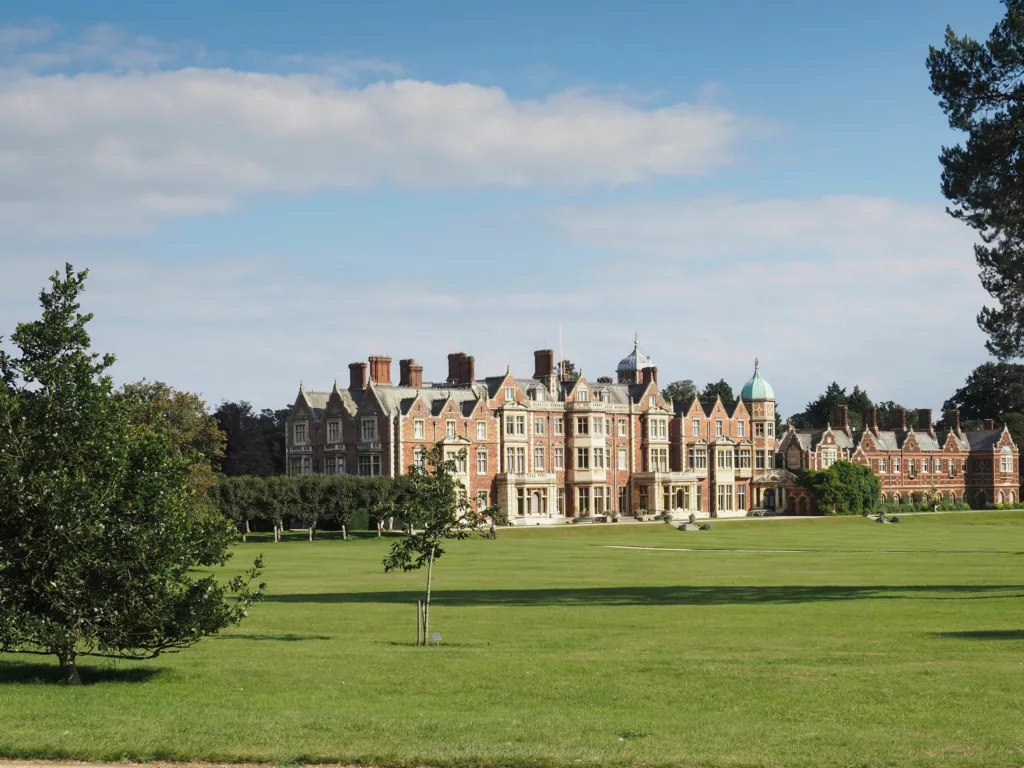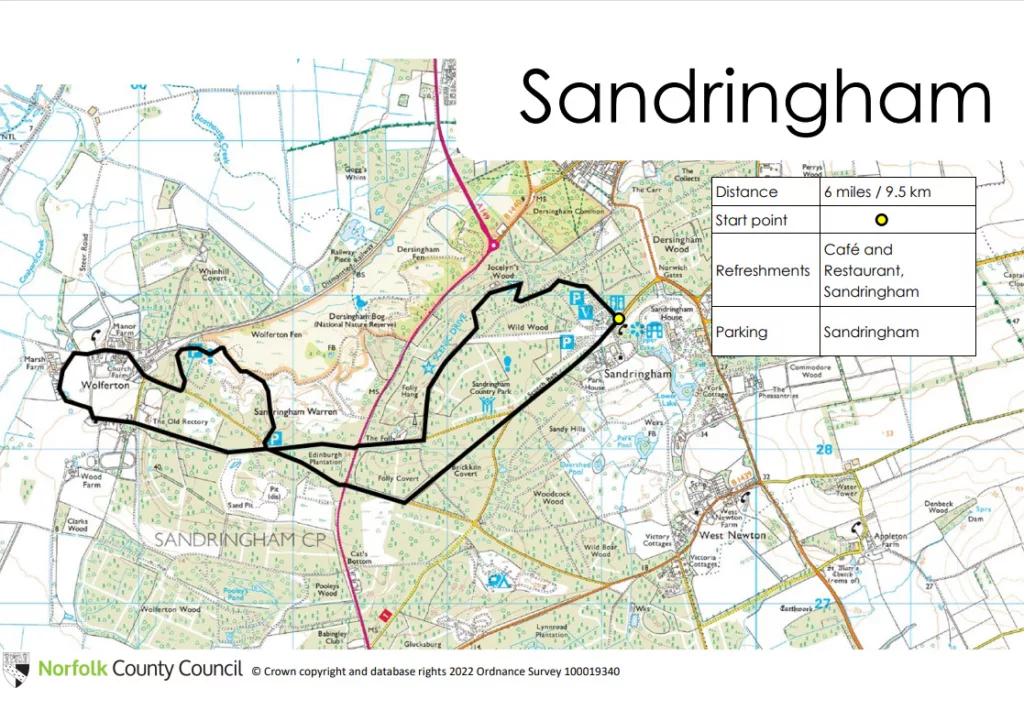Sandringham House is perhaps the most famous stately home in Norfolk and is at the heart of the 8,000-hectare Sandringham Estate, twenty-four hectares of which consists of mixed woodland and heath. The name Sandringham means “Sant Dersingham”, the sandy part of Dersingham, which is a less famous neighbour and means ‘Homestead/village of Deorsige’s people’. So, in effect, Sandringham means ‘the sandy home of Deorsige’s people’. Over generations this name was shortened to simple Sandringham.
As early as 1296 there is evidence of a house being on the site and various early flint tool artefacts have been found nearby as has the remains of a later Roman Villa. The house that was purchased in 1862 by the then Prince of Wales, later King Edward VII was a plain Georgian house with a white stucco exterior. This building would eventually be demolished and replaced by the present building which was designed by A. J. Humbert, and built by local firm, Goggs Brothers of Swaffham. The main part of Sandringham House was completed in 1870, a ballroom was added by 1883, and new guest and staff accommodation added in the 1890s.
When Edward VII took ownership of the house, the surrounding countryside was large sweeping tracks of heathland with little tree growth. The poor soil greatly restricted any colonisation of trees. The heathland was part of Norfolk’s great heathland that once covered large parts of the county. The King wanted to add woodland to his new estate, however his first attempt failed as the soil rejected all attempts to plant trees. Although the second attempt worked better, and the mixed arboretum of tree species is a direct result of his endeavours. Today, Norfolk heathland is a rarity and is being restored.
This walk takes you through the very eclectic mix of tree species followed by the most intact and largest of acid valley mire in East Anglia, Dersingham National Nature Reserve. You will also have the chance to walk past the Royal Station at Wolferton, which during its heyday had the feet of multiple European Kings, Queens, and Emperors including the infamous Rasputin, who incidentally the King refused to meet.

